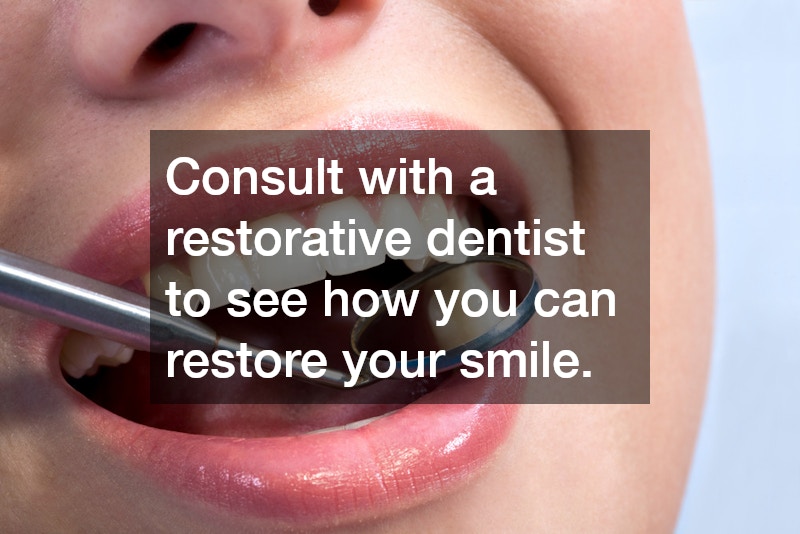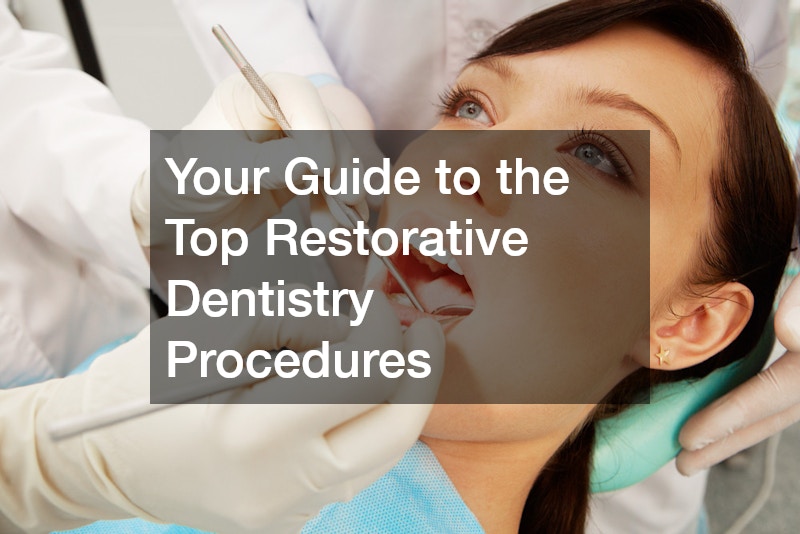Restorative dentistry serves as a cornerstone in the realm of dental health, bringing focus not only to aesthetic appeal but primarily to the health and functionality of your smile. With modern technology and advanced techniques, restorative dentistry has made remarkable strides in improving oral health outcomes. This article aims to delve into some of the most common procedures you will find offered by a restorative dentist, providing insight into how they work to restore and enhance the well-being of your teeth and gums.
What is Restorative Dentistry?
Restorative dentistry refers to the branch of dentistry that deals with the diagnosis, prevention, and treatment of oral diseases and damage to the teeth. Unlike cosmetic dentistry which primarily focuses on aesthetics, restorative procedures are designed to restore the normal function and appearance of the teeth. This field encompasses a range of practices including the assessment and treatment of dental cavities, damaged or missing teeth, and diseases affecting the gums and supportive structures. Dentists specializing in this field employ various techniques and materials to repair these issues, thus ensuring better oral health for their patients. Restorative dentistry ultimately aims to revitalize the oral cavity and improve the overall quality of life for individuals.
Importance of Restorative Procedures
The importance of restorative dentistry cannot be overstated as it plays a crucial role in maintaining oral and overall health. Diseased or damaged teeth can lead to more serious health issues, including infections that could affect the whole body if left untreated. Restorative procedures are essential to prevent such complications, as they address underlying issues that might not be immediately visible. By restoring damaged teeth or replacing missing ones, these procedures help maintain the proper alignment of remaining teeth, making regular oral hygiene practices like brushing and flossing more effective. Moreover, having a healthy and functional set of teeth can significantly boost an individual’s self-esteem and quality of life, allowing them to engage more freely in social interactions.
Who Needs Restorative Dentistry?
Restorative dentistry is beneficial for a vast array of patients experiencing dental issues, ranging from minor cavities to extensive tooth loss. Individuals with decayed, fractured, or missing teeth form the primary group who can significantly benefit from the intervention of restorative techniques. People with congenital dental defects or those who have suffered injuries that impair dental function are also prime candidates. Furthermore, those experiencing chronic dental conditions, such as periodontitis, find restorative procedures crucial for maintaining oral health and preventing further damage. Overall, virtually anyone experiencing compromised dental function can access restorative dentistry to reclaim their smile’s health and functionality.
What are the Most Common Restorative Dental Procedures?
Dental Fillings
Dental fillings are one of the most common restorative procedures, employed to treat cavities and repair damaged teeth. The process involves the removal of decayed material from the tooth, followed by the application of a filling material to restore the tooth’s shape and function. Several materials are used for dental fillings, including amalgam, composite resins, gold, and porcelains, each offering unique advantages. Composite resins, for example, are popular for their aesthetic appeal, as they can be closely matched to the natural color of the teeth. Properly placed fillings prevent further decay and restore the tooth’s normal function, allowing individuals to chew comfortably and effectively.
Crowns and Bridges
Crowns and bridges are restorative solutions commonly used to repair or replace damaged or missing teeth. A crown is a cap placed over a damaged tooth, restoring its shape, size, and strength, while a bridge involves one or more artificial teeth anchored by crowns on either side of a gap. These solutions are integral for maintaining oral function, especially when teeth are fragile or missing, as they balance the bite and prevent shifting and misalignment of adjacent teeth. Crowns and bridges, often crafted from porcelain or ceramic materials, can also enhance the appearance of teeth, offering an added cosmetic benefit. With proper care, these restorations can last many years, making them a valuable investment in dental health.
Root Canal Therapy
Root canal therapy is a crucial restorative procedure intended to save a tooth that is severely infected or decayed. The process involves removing the infected pulp from the tooth’s innermost chamber, cleaning and disinfecting the area, and sealing it with a filling to prevent future infections. Often recommended when the decay extends into the nerve chamber of the tooth, this procedure alleviates pain, prevents tooth loss, and preserves the natural tooth structure. Advancements in modern dentistry have made root canal therapy much less painful than traditionally perceived, with most patients experiencing no more discomfort than with having a cavity filled. Timely intervention with a root canal can avert more serious dental or systemic health issues arising from untreated infections.
Dentures
Dentures are a common restorative option for individuals who have lost most or all of their teeth in one or both jaws. Available in full or partial forms, dentures are custom-made to fit the contours of the patient’s mouth, restoring both appearance and function. Modern dentures are crafted with meticulous attention to detail, utilizing materials that closely mimic the appearance of natural teeth and gums. Advances in design have also resulted in prosthetic teeth that are more comfortable and secure, enhancing the wearer’s confidence and ability to speak and eat naturally. For individuals unable to opt for dental implants, dentures provide a versatile and economically viable solution for restoring their smile.
Dental Implants
Dental implants are hailed as one of the most effective and durable solutions for replacing missing teeth. This procedure involves the surgical placement of a titanium post into the jawbone, which acts as a stable anchor for a crown, bridge, or denture. Implants not only restore functionality and appearance but also help preserve jawbone integrity, preventing bone deterioration that typically follows tooth loss. As a more natural-like option, implants offer superior comfort and strength, allowing patients to eat and speak with confidence. While the procedure may require a higher initial investment, the long-term benefits of dental implants often outweigh those of alternative methods.
What is the Recovery Process Like After Restorative Procedures?
Immediate Post-Procedure Care
Proper care immediately following a restorative dental procedure is crucial for optimal healing and longevity of the treatment. Patients are generally advised to avoid eating until the anesthesia wears off and any numbness has dissipated to prevent injury. Soft foods and plenty of hydration can help minimize discomfort and facilitate a smooth initial recovery phase. Keeping the treated area clean is vital; thus, following specific care instructions provided by the dentist, including gentle brushing and rinsing, can prevent infection. Any discomfort or swelling can often be managed with over-the-counter pain relievers and should subside within a few days.
Long-term Recovery Plans
A successful recovery from restorative dental procedures goes beyond immediate care and involves establishing a long-term plan to maintain results. Patients should maintain regular dental hygiene practices, such as brushing twice daily with fluoride toothpaste and flossing, to keep the treated area clean and healthy. Regular check-ups and cleanings with a dental professional are crucial to evaluate the success of the treatment and monitor for any changes. Dietary habits may also need to be adjusted, such as avoiding hard foods that could damage restorations and harm the natural tooth structure. Sticking to a diligent oral care regimen ensures the durability and functionality of restorative treatments.
Pain Management
Pain management is an integral part of the recovery process after restorative dental procedures, helping patients navigate any discomfort experienced. Most discomfort can be relieved with over-the-counter pain medications such as ibuprofen or acetaminophen, but dental professionals may prescribe stronger pain relief if necessary. Applying ice packs to the affected area can also reduce swelling and numb pain. Attention should be paid to not overusing pain medications and to discontinue use if they effectively manage the symptoms. Open communication with the dental professional about pain levels can allow for adjustments in the recovery plan and minimize discomfort.
Follow-up Appointments
Follow-up appointments with the dental professional are fundamental to monitoring the progress and success of restorative treatments. During these visits, dentists can assess the healing process, address any concerns, and make necessary adjustments to the restorations if required. Regular check-ups are an opportunity to receive professional cleanings and ensure that other oral health issues do not arise. Maintaining these appointments can prevent minor problems from escalating into significant complications that might jeopardize the treatment’s success. Consistent, open communication with a dental care provider supports the long-term health and function of restored teeth.
Conclusion
Restorative dentistry encompasses a wide range of procedures designed to restore and maintain the functionality and health of the teeth, gums, and overall smile. By addressing issues such as decay, damage, and tooth loss, restorative practices enhance oral health and contribute to a better quality of life. Consulting with qualified dental professionals is essential in determining the most suitable restorative options tailored to individual needs. By understanding the importance of maintaining regular dental visits and adhering to prescribed aftercare routines, individuals can optimize the outcomes of restorative treatments. Pursuing restorative dental procedures can be an empowering step toward achieving a healthy and vibrant smile.

